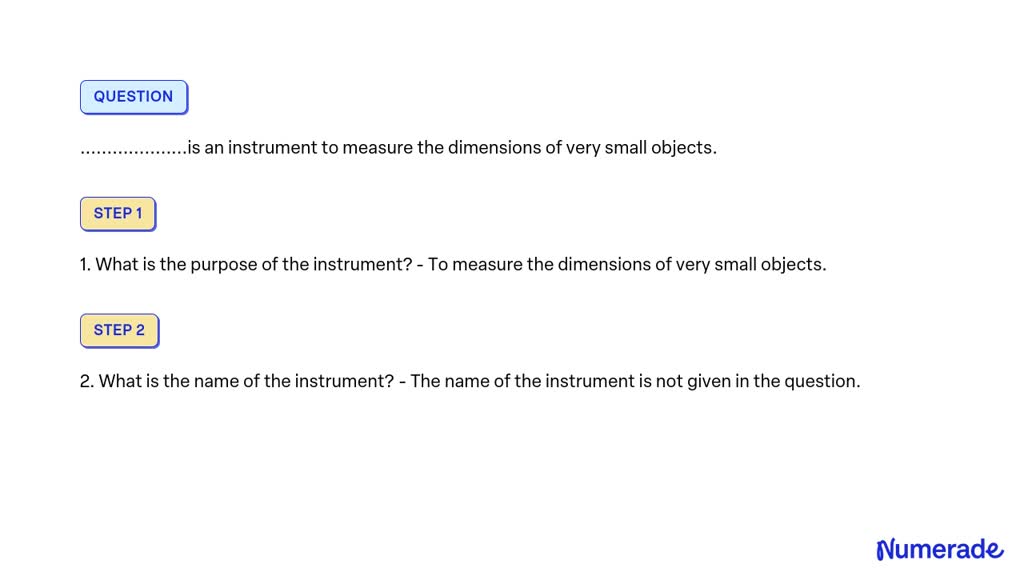In the realm of metrology, the measurement of small objects is of paramount importance across various scientific disciplines, engineering applications, and manufacturing processes. A plethora of instruments exist, each tailored to facilitate precise measurements with varying degrees of resolution and accuracy. This discourse delves into several pivotal instruments employed in the measurement of small objects, illuminating their functionalities, advantages, and the nuances that make each uniquely advantageous for specific applications.
The first instrument that commands attention is the microscope, an indispensable tool in laboratories across the globe. Microscopes enable observers to magnify objects that are imperceptible to the naked eye, rendering it possible to discern intricate details. The optical microscope, utilizing visible light and a series of lenses, can magnify objects up to 1,000 times their original size. However, it is the advent of the electron microscope that has revolutionized our capacity to measure minuscule entities. Capable of magnifying beyond 2 million times, electron microscopes utilize charged electrons instead of light, providing minute resolution that is particularly valuable in fields such as materials science, biology, and nanotechnology. With their ability to visualize cellular structures and molecular arrangements, these microscopes promise to transform our understanding of the microscopic world.
Complementing the microscopy revolution is the coordinate-measuring machine (CMM), an instrument revered for its precise three-dimensional measurements of physical objects. CMMs leverage mechanical probes that traverse around the object, registering its coordinates in space. For industries that manufacture intricate components—such as aerospace, automotive, and electronics—CMMs are critical, facilitating quality assurance and adherence to tight tolerances. They can operate with contact or non-contact sensors, each delivering unparalleled fidelity. This machinery underscores a meticulous commitment to accuracy, proving that in a world where every micron matters, CMMs are the harbingers of precision engineering.
Beyond the CMM, the digital caliper serves as a tool of choice for engineers and machinists alike, offering a more accessible yet similarly effective method of measuring dimensions. The digital caliper, with its sleek design and electronic readout, facilitates the measurement of internal and external dimensions as well as depths with remarkable ease. Capable of measuring to an accuracy of 0.01 mm, it epitomizes elegance in simplicity, making it an essential instrument in workshops and laboratories. Before the digital realm took over, manual vernier calipers served this function, demanding a nuanced skill set to interpret their readings accurately. Now, the digital advancement not only improves user experience but enhances measurement reliability.
When it comes to gauging the thickness of materials, the micrometer screw gauge stands as an archetype of precision. Employing a calibrated screw mechanism, the micrometer can measure dimensions as small as one one-thousandth of a millimeter. This sophisticated, yet straightforward device has long been a staple in mechanical engineering and manufacturing, thanks to its ability to achieve fine resolutions. Often used in conjunction with other measuring tools, micrometers can provide the meticulous data required for high-performance applications, ensuring that even the most minute thicknesses are accounted for accurately.
In an age of rapid technological advancement, laser measuring tools have emerged as elegant solutions for obtaining high-precision measurements, even over considerable distances. Laser micrometers, for instance, employ laser beams to ascertain dimensions, delivering an accuracy standard that hippopotamuses a few micrometers. Their non-contact nature makes them perfect for delicate materials susceptible to distortion under pressure. Furthermore, they can be embedded in automated systems for inline quality control processes, emphasizing their utility in contemporary manufacturing environments.
Another noteworthy tool utilized for measuring small objects is the atomic force microscope (AFM). The AFM operates on a fundamentally different principle, mapping surfaces at the atomic level by utilizing a cantilever that experiences forces between the probe tip and the sample surface. This exceptional technique yields three-dimensional images of molecular architectures, enabling scientists to explore optical, electrical, and mechanical properties at the nanoscale. The AFM represents the triumph of engineering melding with physics, offering panoramic views into the subatomic architecture of matter.
In conjunction with these sophisticated devices, one must not neglect traditional measuring tools such as scales and balances. While primarily used for macroscopic objects, balances calibrated to high resolutions are capable of measuring small samples, allowing for the assessment of mass with astounding accuracy. The recent evolution of analytical balances realizes tolerances down to milligrams, essential in chemical laboratories where the measurement of reactants can dramatically influence experimental outcomes.
With this plethora of intricate measuring tools at our disposal, one must appreciate that the choice of instrument hinges upon specific requirements dictated by the intended application. Factors such as the desired level of precision, the physical size of the object, and environmental conditions play crucial roles in dictating the appropriate technology. As we delve deeper into the microcosm, the pursuit of precision continues to drive innovation, expanding the horizons of what is possible in scientific inquiry and technological advancement.
In conclusion, the measurement of small objects is facilitated by an array of precision instruments, each uniquely designed to meet specific research and industrial needs. From the intimate examination of microscopic structures to the meticulous measurements required in high-stakes engineering, these tools represent humanity’s relentless pursuit of accuracy and understanding in an ever-evolving landscape of technology and innovation.










